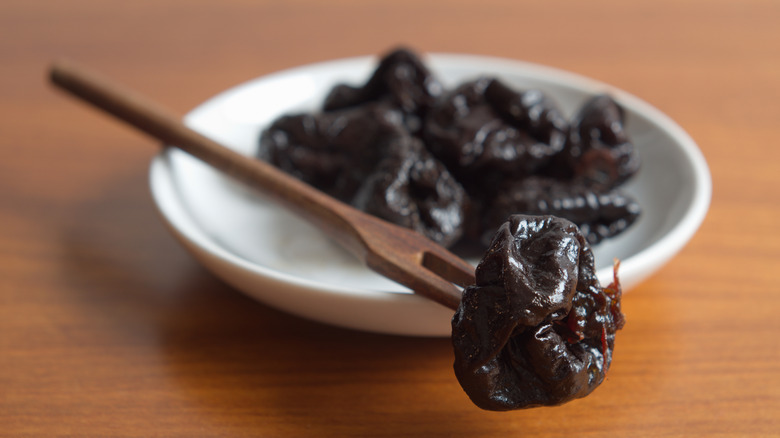
High blood pressure is a prevalent and hazardous health condition, often progressing without any obvious symptoms. If you don’t have your blood pressure checked regularly, you might be unaware of its presence. This is why high blood pressure is often termed the “silent killer.” Without management, it can elevate the risk of heart attack, stroke, and kidney disease.
A straightforward, natural approach to aid in lowering your blood pressure is to consume foods high in potassium and low in sodium, such as prunes. While prune juice might remind you of your grandparents, prunes (dried plums) are a surprisingly potent heart-healthy snack. Just three prunes provide about 2 grams of fiber to help maintain regularity, and the 220 milligrams of potassium can aid in relaxing blood vessel walls and counterbalancing sodium’s effects.
Prunes contain less than a milligram of sodium, making them excellent for enhancing your sodium-to-potassium ratio. Ideally, aiming for a sodium-to-potassium ratio between 0.6 and 0.8 is recommended for controlling blood pressure, as advised by Intake Health. Prunes have a 0.002 sodium-to-potassium ratio.
Look for low-sodium, high-potassium foods

Many people don’t get sufficient potassium in their diets, while globally, individuals often average over 6 grams of sodium daily. According to a 2009 article in BMJ, high sodium intake is estimated to result in a 23% increased risk of stroke and a 14% higher risk of heart disease. The American Heart Association suggests keeping your sodium intake below 2,300 milligrams a day, ideally around 1,500 milligrams if you have high blood pressure.
However, merely reducing sodium may not suffice, particularly if your diet lacks potassium. Similarly, increasing potassium without reducing sodium might not be enough to manage high blood pressure, as noted in a 2014 review in Advances in Nutrition. It’s crucial to focus on how the food choices in your diet affect the sodium-to-potassium ratio. While a serving of prunes may only provide about 7% of your potassium needs, incorporating more high-potassium/low-sodium foods can aid in more effectively managing your blood pressure.
Prunes have other health benefits

Prunes offer more than just benefits for digestion and blood pressure. Dried fruits like prunes are rich in powerful plant compounds that provide health advantages beyond basic nutrition.
According to a 2023 review in Nutrients, prunes are a great source of beta-carotene. This carotenoid supports healthy vision, enhances your immune system, and helps maintain radiant skin.
Prunes also contain phytoestrogens, naturally occurring plant compounds that may help balance hormones and support bone health, especially during menopause. These hormone-like compounds mimic estrogen in the body and may reduce the risk of osteoporosis.
If you aim to boost your antioxidant intake, prunes are an excellent choice. They have a relatively high ORAC (Oxygen Radical Absorbance Capacity) value, which measures antioxidant activity that protects your cells from damage caused by free radicals.
The fiber in prunes not only aids in regular digestion but also nourishes the beneficial bacteria in your gut. Enhancing your gut microbiome is linked to improved immune function, metabolism, and even mood.




